Leica M (Typ 240): Leica Elmar-M 24mm f/3.8 ASPH.
Introduction | Body with Lens Attached | Some Technical Data | Color Shading and Vignetting | Sample Images | Close-Up Behavior | Conclusions | Links | Appendix: Unpacking
Archive
On these pages you can find my first personal experiences with my M-mount lenses at the Leica M (Typ 240). This page is devoted to the Leica Elmar-M 24mm f/3.8 ASPH. lens (model 11648; S/N 4082358), the fourth lens that I bought after purchasing the Leica M (Typ 240), and which replaces my Voigtländer Snapshot-Skopar 25mm f/4 lens, because the latter shows serious color shading at the Leica M. Also note that this is my second coded lens.
All lens pages: Voigtländer 15mm f/4.5 | Voigtländer 15mm f/4.5 III | Zeiss Biogon 21mm f/4.5 | Leica Elmarit-M 21mm f/2.8 ASPH. | Leica Elmar-M 24mm f/3.8 ASPH. | Voigtländer 25mm f/4 (M39) | Minolta M-Rokkor 28mm f/2.8 | Zeiss Biogon 35mm f/2.8 | Zeiss Sonnar 50mm f/1.5 | Voigtländer 75mm f/2.5 (M39) | Leitz Hektor 85mm f/2.5 (M39) | Leitz Elmar-C 90mm f/4 | Leitz Tele-Elmarit-M 90mm f/2.8 | Leitz Tele-Elmar 135mm f/4
See also: Leica Elmar-M 24mm f/3.8 ASPH. versus Voigtländer 25mm f/4 (M39) - Voigtländer Snapshot-Skopar 25mm f/4 - Voigtländer Super Wide Heliar 15mm f/4.5 versus Leica Elmarit-M 21mm f/2.8 ASPH. versus Leica Elmar 24mm f/3.8 - Leica Elmarit-M 21mm f/2.8 versus Leica Elmar-M 24mm f/3.8
Introduction
Since the Voigtländer Snapshot-Skopar 25mm f/4 lens exhibited strong magenta color shading on the Leica M (Typ 240), I decided to exchange it against a Leica 24 mm lens in December 2016 in order to have less trouble and work with color shading. I found a used Leica Elmar-M 24mm f/3.8 ASPH. lens in the buy/sell section of the l-camera-forum, contacted the owner, and bought this lens, although it was more expensive than I am typically willing to spend. This lens has a maximum f-stop of 3.8 and is larger and heavier than the Snapshot-Skopar, which is a pancake lens.
This lens (model 11648) is made in Germany since 2008. My sample has the serial number 4082358, which means that it was built in 2008 (source: Leicapedia); it was originally sold in 2010 in the UK.
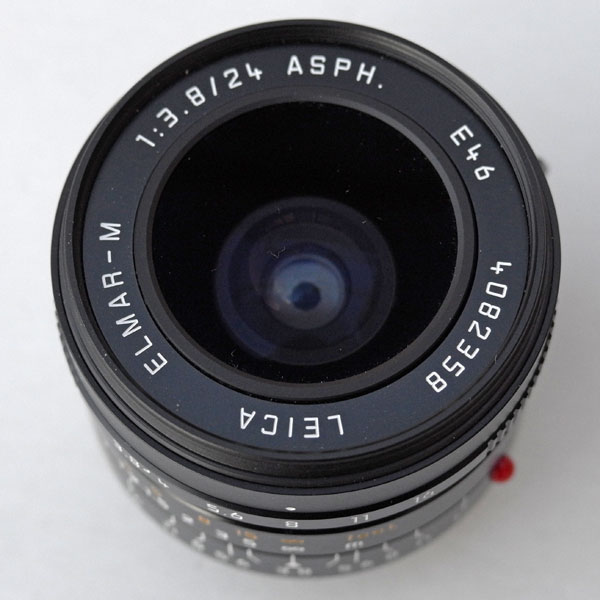 |
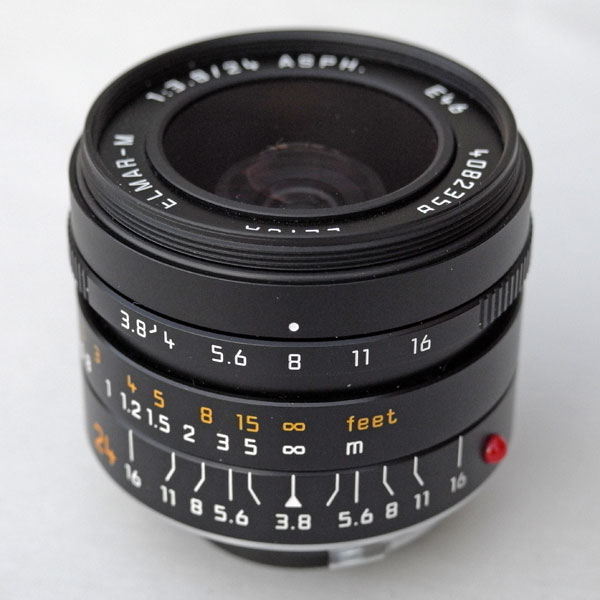 |
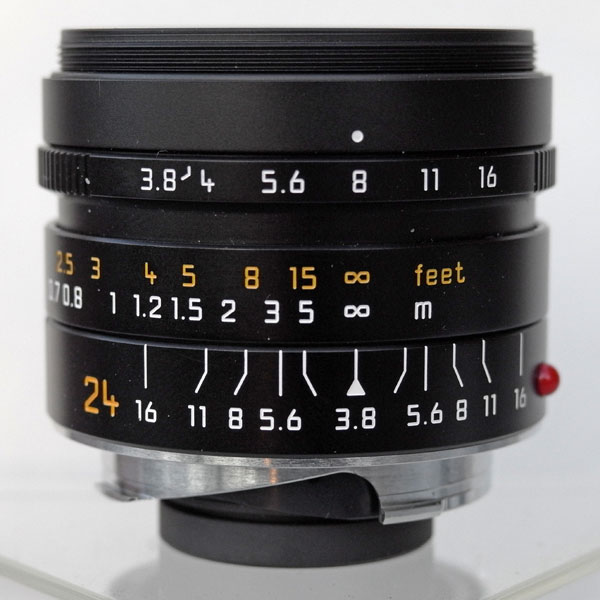 |
||
 |
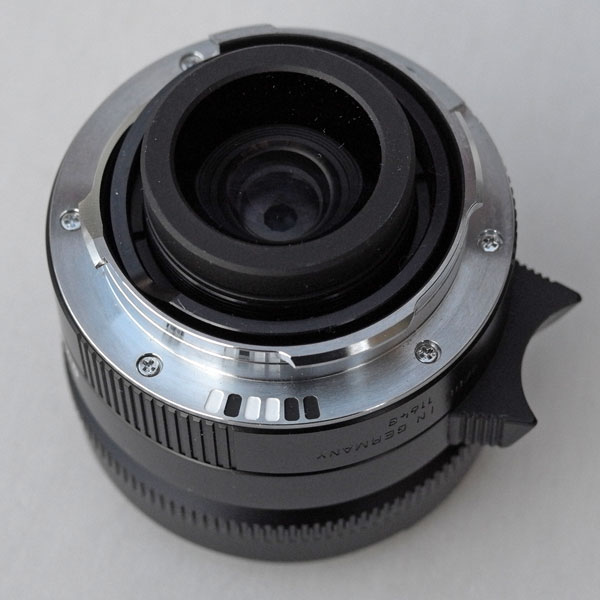 |
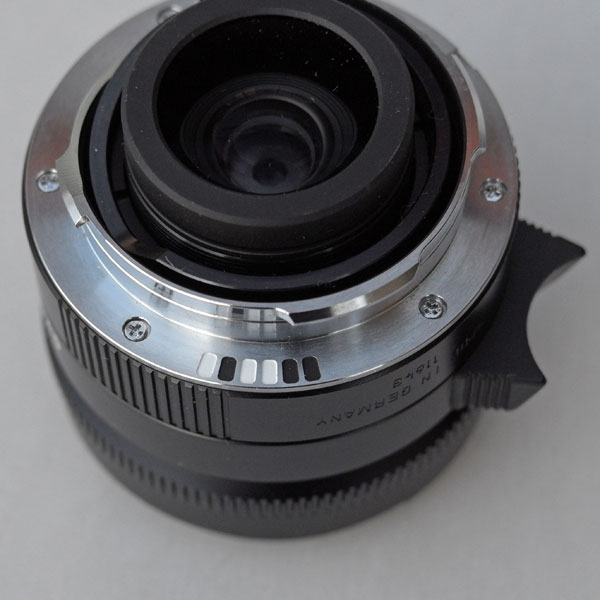 |
||
6-bit coding at the bayonet |
6-bit coding at the bayonet |
6-bit coding at the bayonet |
||
 |
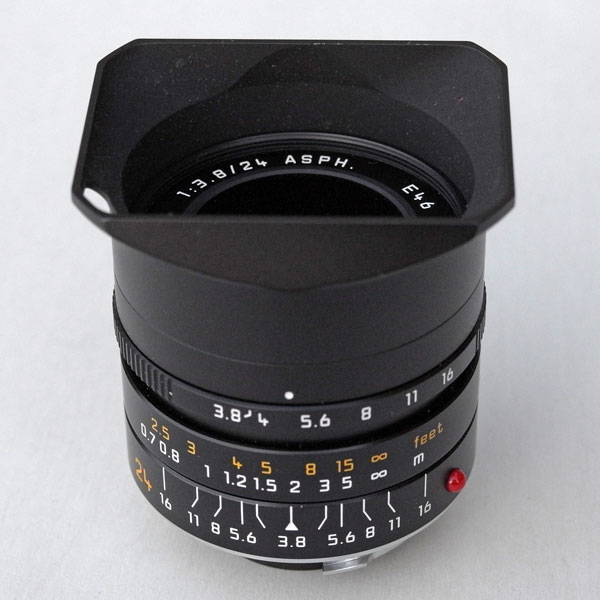 |
Photos: Leica Elmar-M 24mm f/3.8 ASPH. lens (bottom row: with lens hood)
Body with Lens Attached
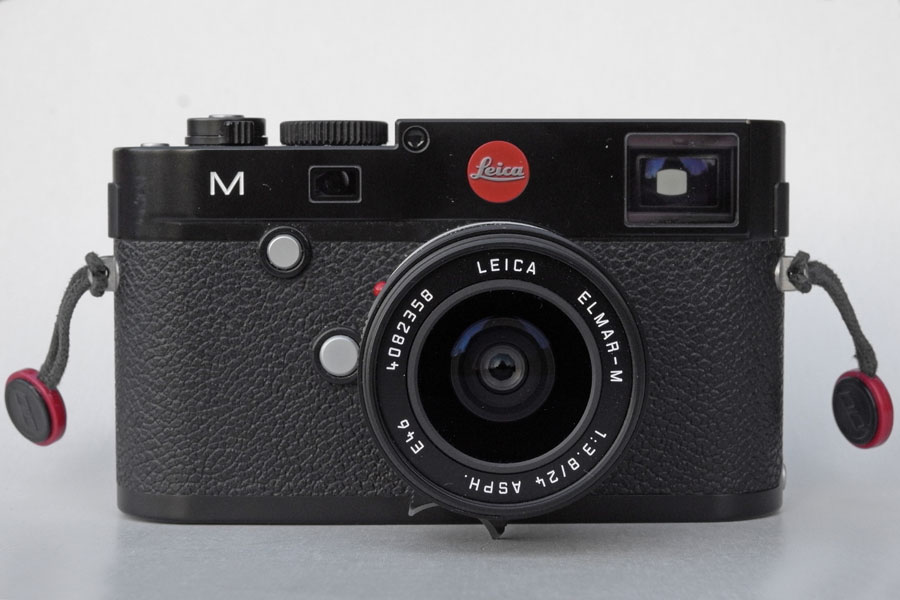 |
 |
|
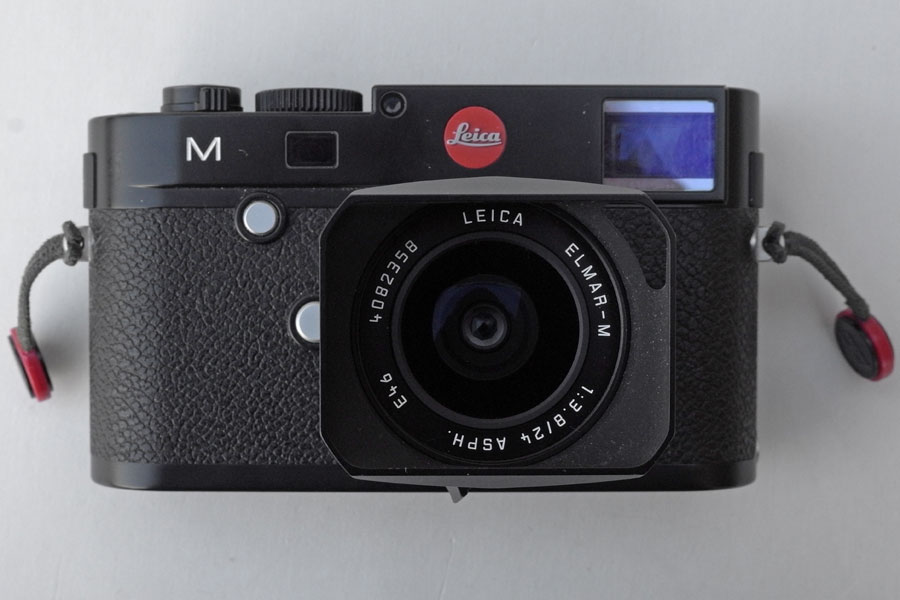 |
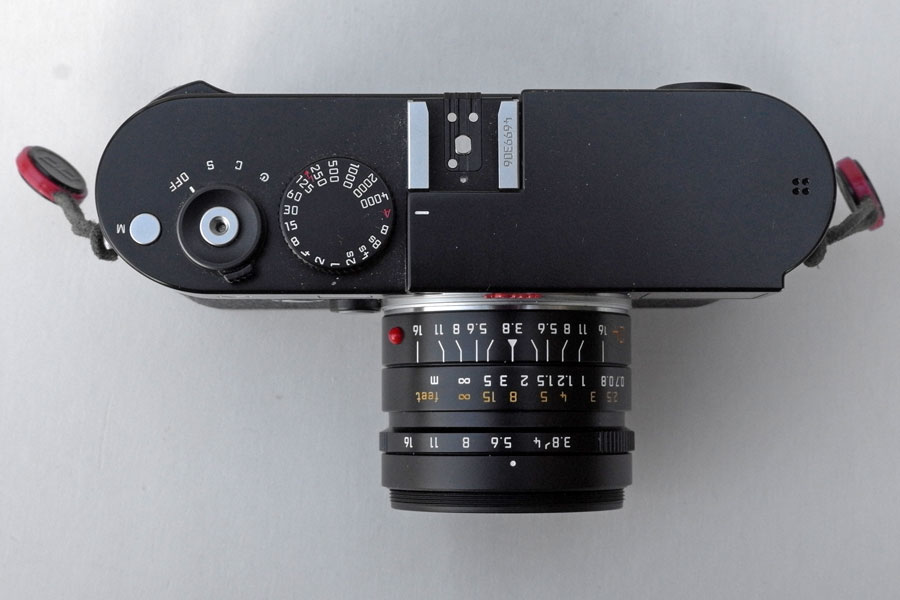 |
|
With lens hood |
|
|
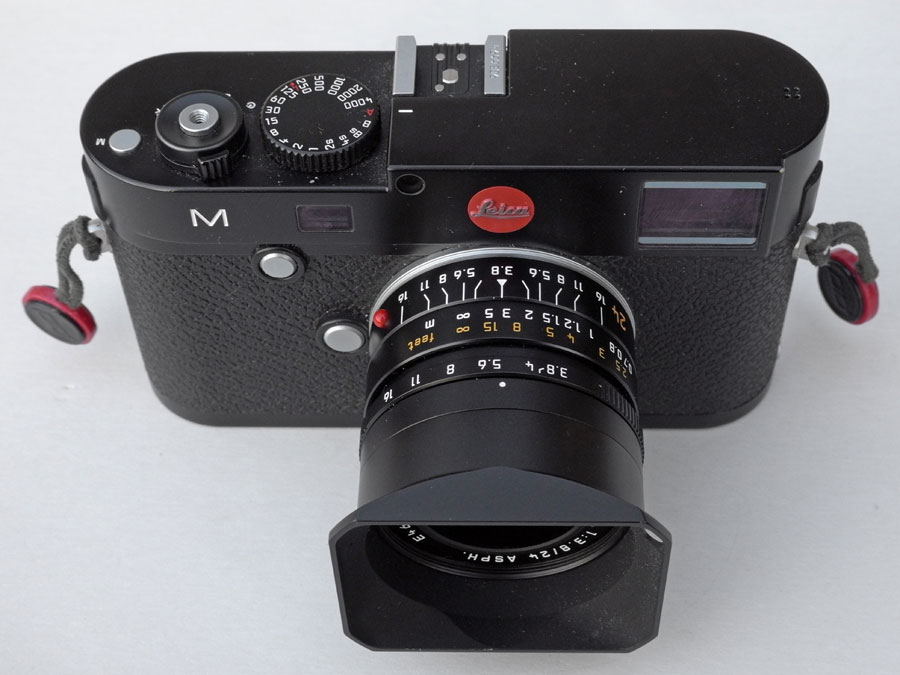 |
 |
|
With lens hood |
With lens hood and cap |
|
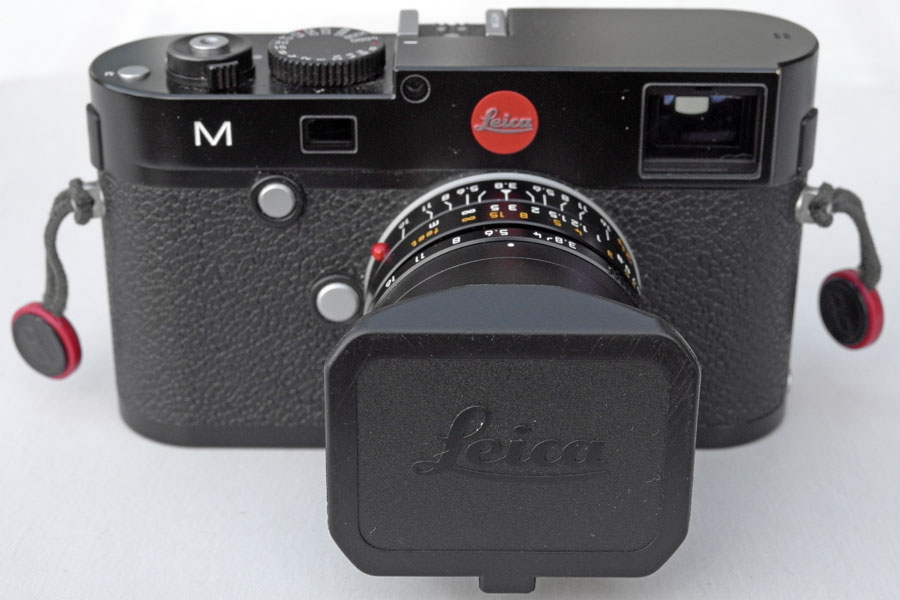 |
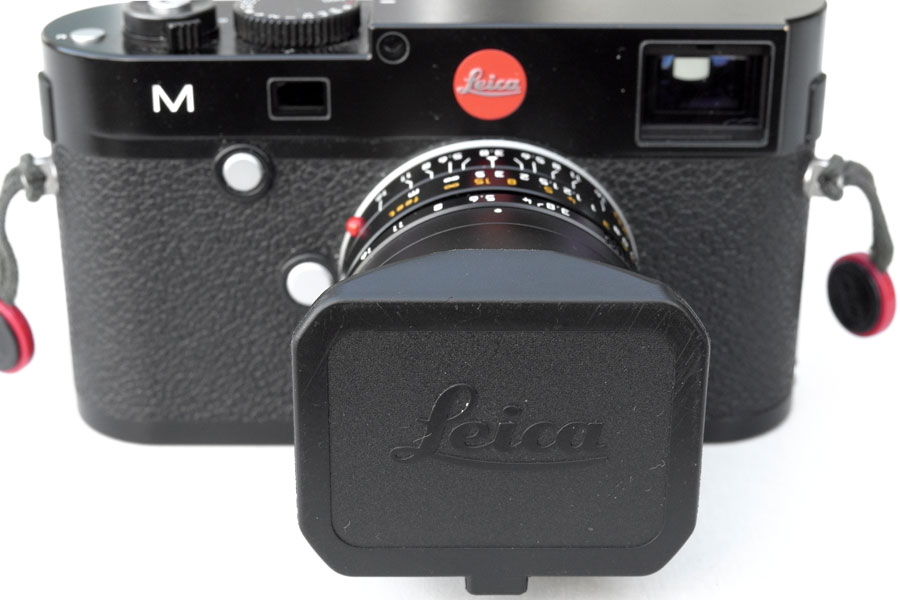 |
|
With lens hood and cap |
With lens hood and cap, near-by |
Photos: Leica M (Typ 240) with Leica Elmar-M 24mm f/3.8 ASPH.
Some Technical Data
| Model number | 11648 |
| Focal length | 24 (24.5) mm |
| Angle of view (35mm film) | 84° diagonal |
| Maximum aperture | 3.8 |
| f-stop range | 3.8-16 |
| Number of iris blades | 9 (not specified by Leica) |
| Number of lenses/groups | 8/6 |
| Shortest distance | 0.7 m |
| Weight (Leica/myself) | 260 g / 239 g |
| Length (overall/from flange) | 56.6 mm / 40.6 mm |
| Maximum diameter | 53 mm |
| Filter thread | 46 mm (E46) |
| Lens hood | 12465 (rectangular hood) |
| Smallest object field / magnification | 922 mm x 615 mm / 1:25.6 (Leica), 976 mm x 651 mm / 1:27.1 (calculated), 920 mm / 1:25.7 (from photo) ) |
DOF Table
| Distance (m) V |
Aperture |
||||
3.8 |
5.6 |
8 |
11 |
16 |
|
| 0.7 | 0.623-0.802 | 0.592-0.862 | 0.556-0.959 | 0.517-1.118 | 0.465-1.560 |
| 0.8 | 0.600-0.939 | 0.660-1.024 | 0.615-1.167 | 0.567-1.419 | 0.503-2.242 |
| 1 | 0.843-1.234 | 0.786-1.391 | 0.721-1.679 | 0.654-2.277 | 0.569-5.781 |
| 1.2 | 0.978-1.563 | 0.900-1.829 | 0.814-2.37 | 0.729-3.815 | 0.623-∞ |
| 1.5 | 1.163-2.129 | 1.053-2.667 | 0.936-4.047 | 0.823-11.77 | 0.688-∞ |
| 2 | 1.436-3.338 | 1.269-4.926 | 1.100-13.73 | 0.946-∞ | 0.769-∞ |
| 3 | 1.876-7.731 | 1.596-32.20 | 1.335-∞ | 1.110-∞ | 0.872-∞ |
| 5 | 2.484-∞ | 2.012-∞ | 1.608-∞ | 1.290-∞ | 0.975-∞ |
| ∞ | 4.838-∞ | 3.298-∞ | 2.324-∞ | 1.704-v | 1.188-∞ |
The data was taken from the Leica technical data sheet for this lens.
Simplified DOF Table
| Distance (m) V |
Aperture |
||||
3.8 |
5.6 |
8 |
11 |
16 |
|
| 0.7 | 0.62-0.80 | 0.59-0.86 | 0.56-0.96 | 0.52-1.19 | 0.47-1.56 |
| 0.8 | 0.60-0.94 | 0.66-1.02 | 0.62-1.17 | 0.57-1.42 | 0.50-2.24 |
| 1 | 0.84-1.23 | 0.79-1.39 | 0.72-1.68 | 0.65-2.28 | 0.57-5.78 |
| 1.2 | 0.98-1.56 | 0.90-1.83 | 0.81-2.37 | 0.73-3.82 | 0.62-∞ |
| 1.5 | 1.16-2.13 | 1.05-2.67 | 0.94-4.05 | 0.82-11.77 | 0.69-∞ |
| 2 | 1.44-3.34 | 1.27-4.93 | 1.10-13.73 | 0.95-∞ | 0.77-∞ |
| 3 | 1.88-7.73 | 1.60-32.20 | 1.34-∞ | 1.11-∞ | 0.87-∞ |
| 5 | 2.48-∞ | 2.01-∞ | 1.61-∞ | 1.29-∞ | 0.98-∞ |
| ∞ | 4.84-∞ | 3.30-∞ | 2.32-∞ | 1.70-∞ | 1.19-∞ |
A few simple Rules
|
|
|
|
Color Shading and Vignetting
| Lens Detection Option, Selected Lens | f/3.8 | f/8 |
| "Off" None |
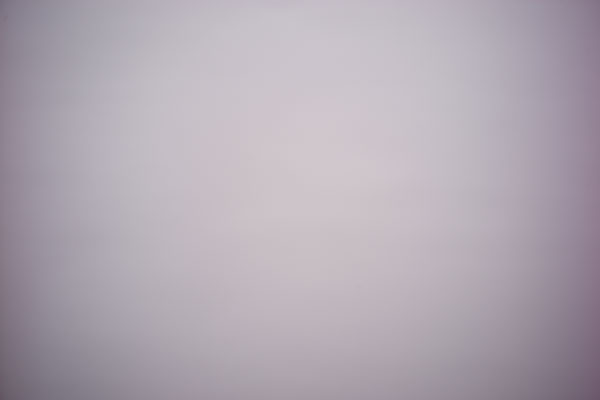 |
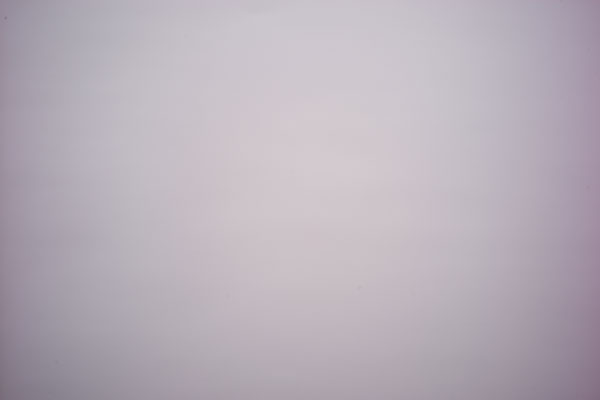 |
| "Automatic" Elmar-M 1:3.8/21 ASPH. 11648 |
 |
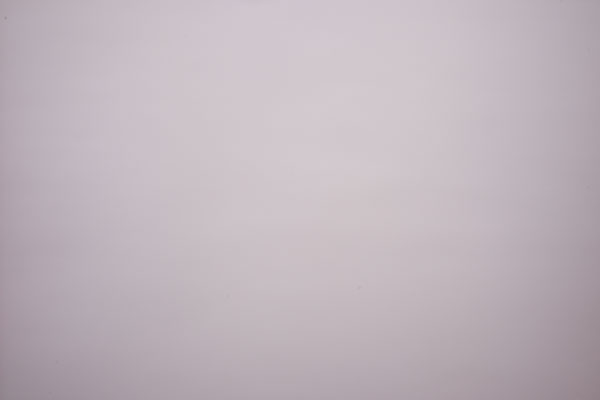 |
Photos: Calibration shots with Leica Elmarit-M 21mm f/2.8 ASPH (taken with EV +1).
Without a lens profile ("Off"), the calibration shots show more vignetting (and less at f/8) and maybe slight color shading (if at all). With the correct profile, vignetting is very low even wide open.
Conclusion: This lens should be used in automatic mode (since this is a "modern lens", a manual setting does not exist for this lens).
My status: "Lens Detection" set to "Automatic."
Sample Images
Here are some first samples taken with the Leica Elmarit-M 24mm f/3.8 ASPH. lens (click the images to view the unprocessed original files in a new window).
A Few First Shots - Automatic Lens Detection
 |
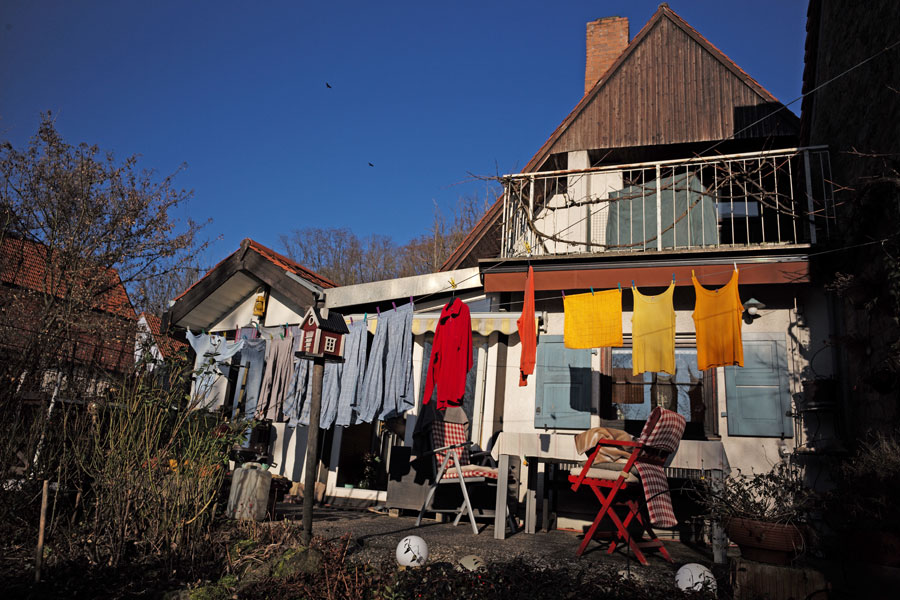 |
|
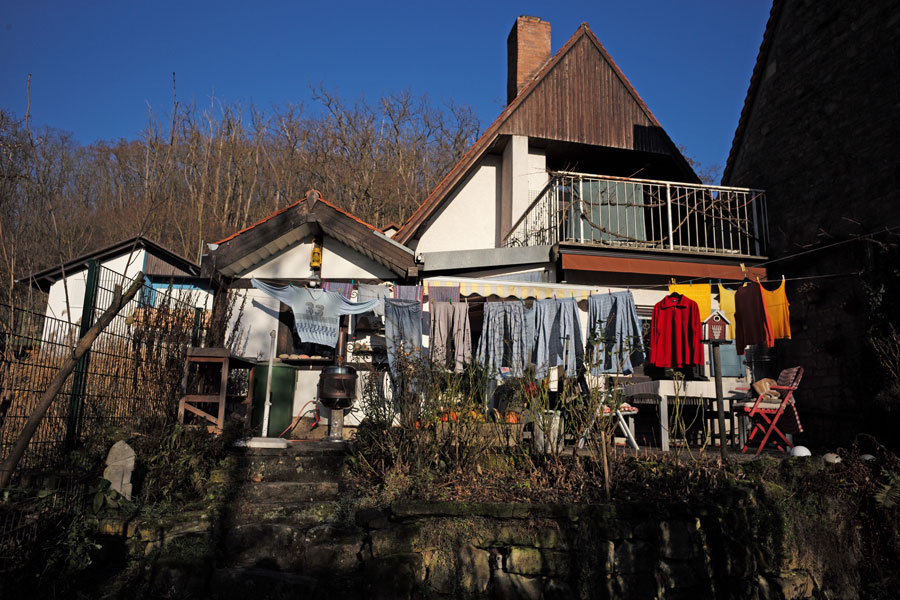 |
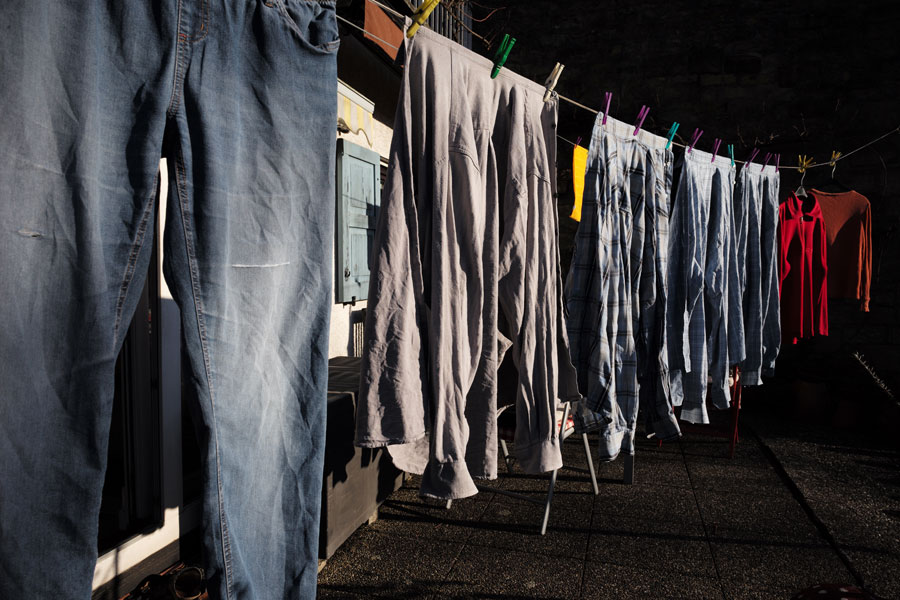 |
The "Standard Walk" Plus Some Sun Stars - Automatic Lens Detection
 |
 |
|
 |
 |
|
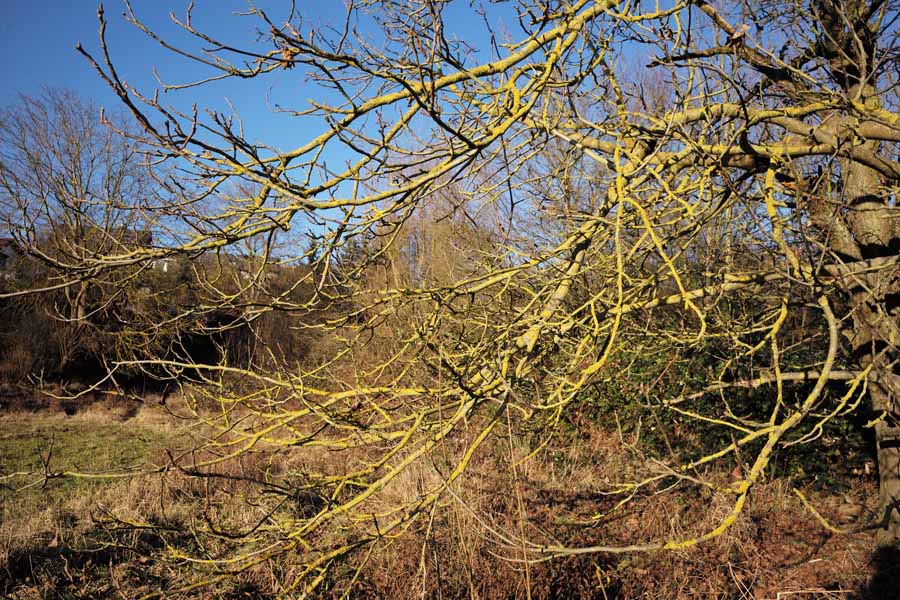 |
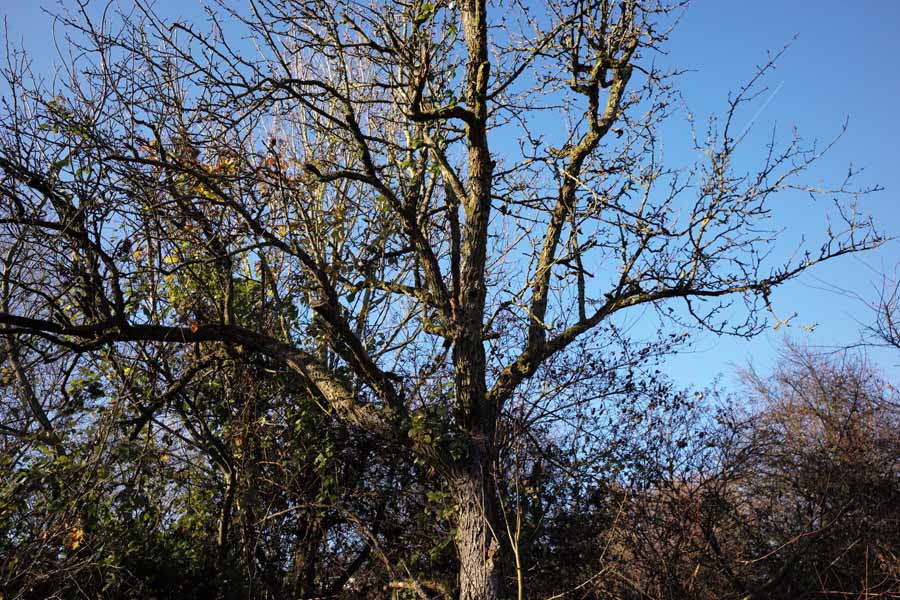 |
|
 |
 |
|
 |
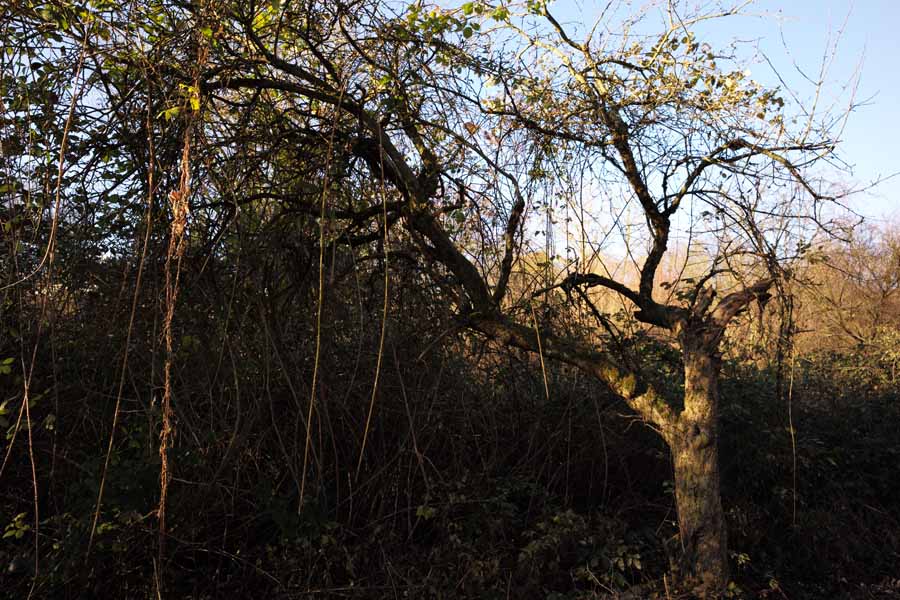 |
|
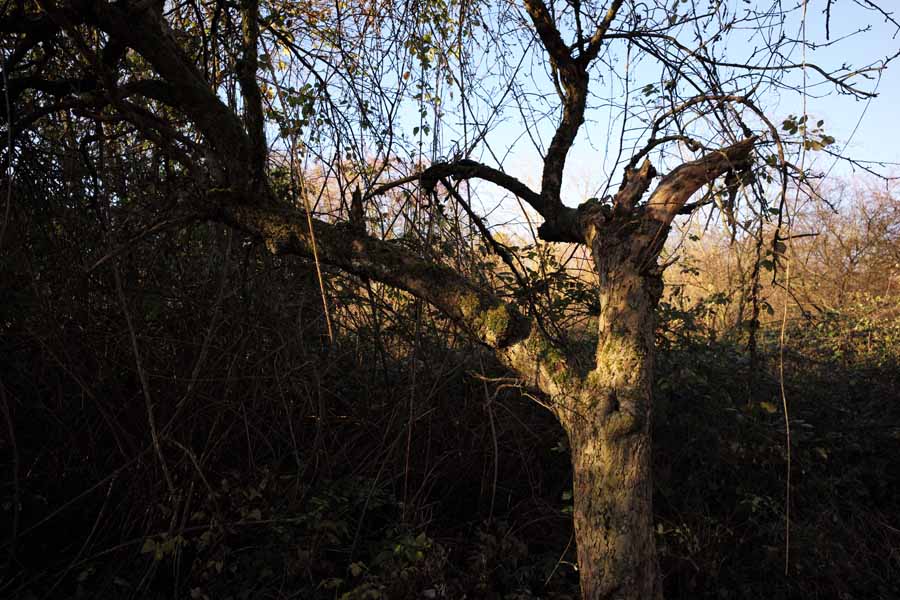 |
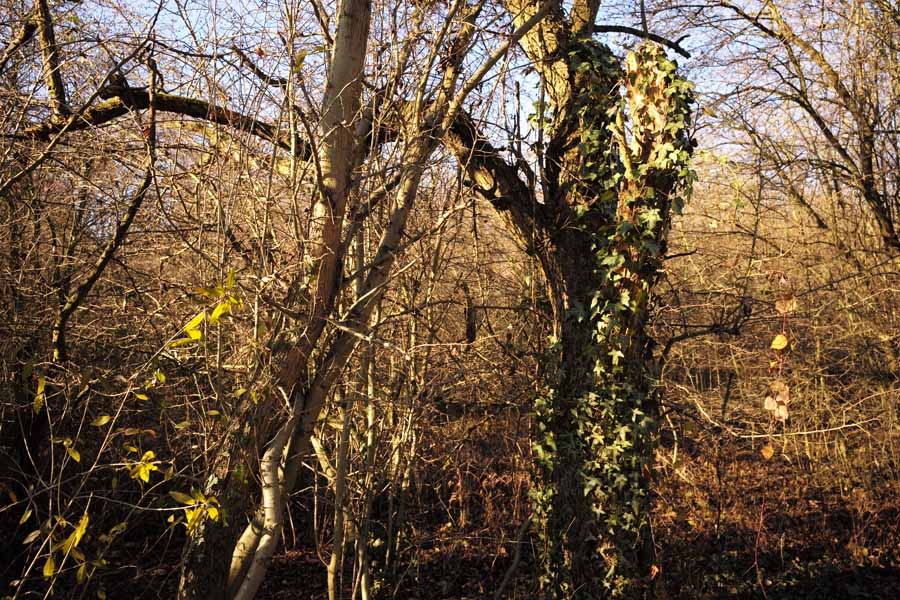 |
|
 |
 |
|
 |
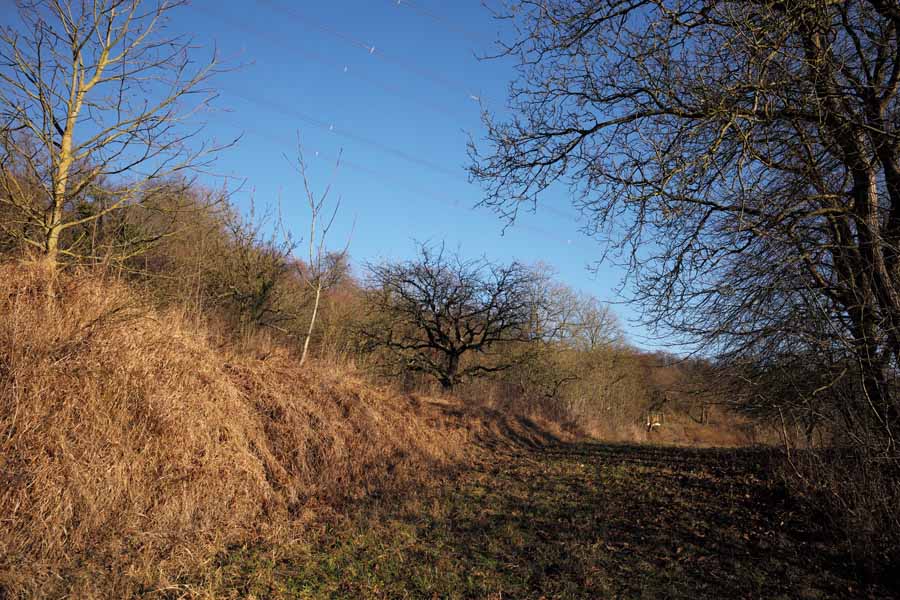 |
|
 |
||
 |
 |
|
 |
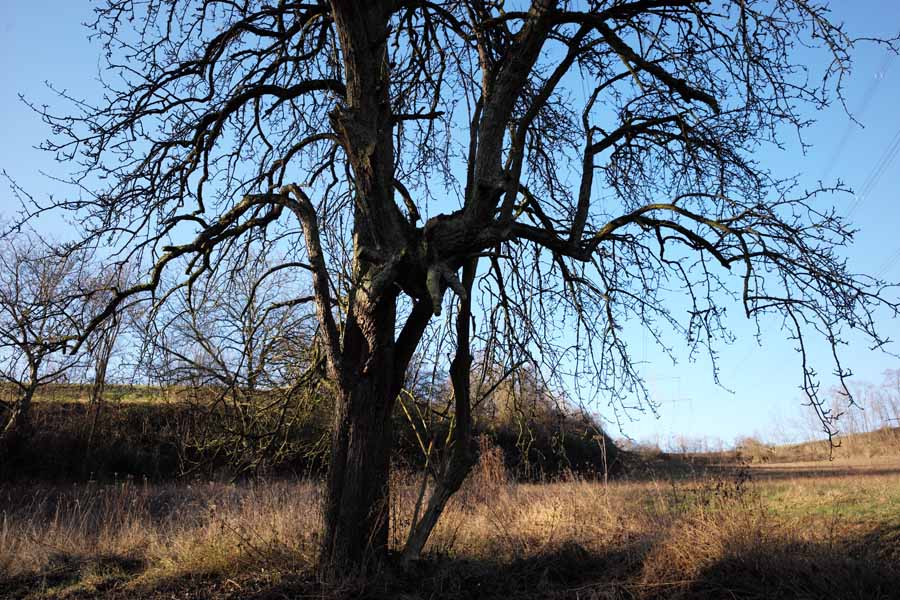 |
|
 |
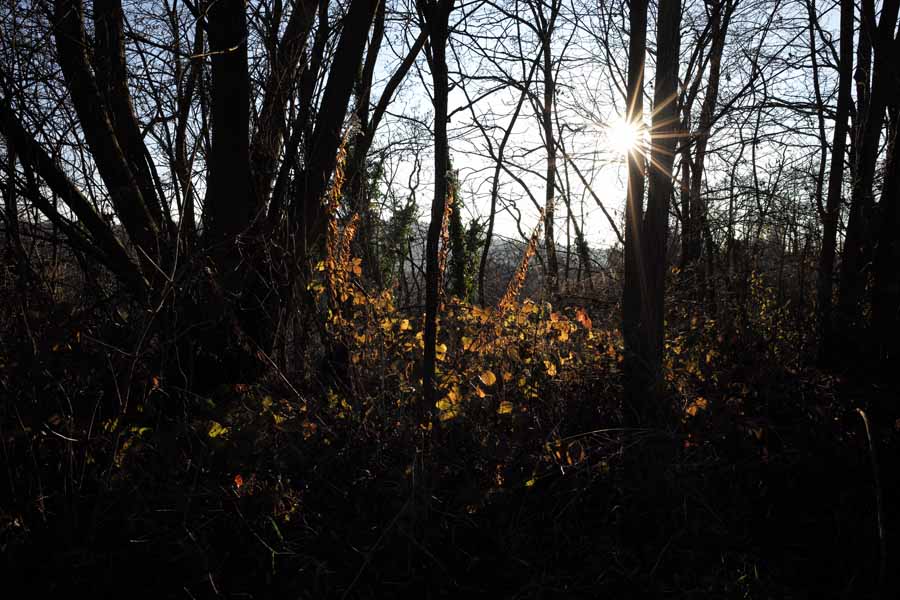 |
|
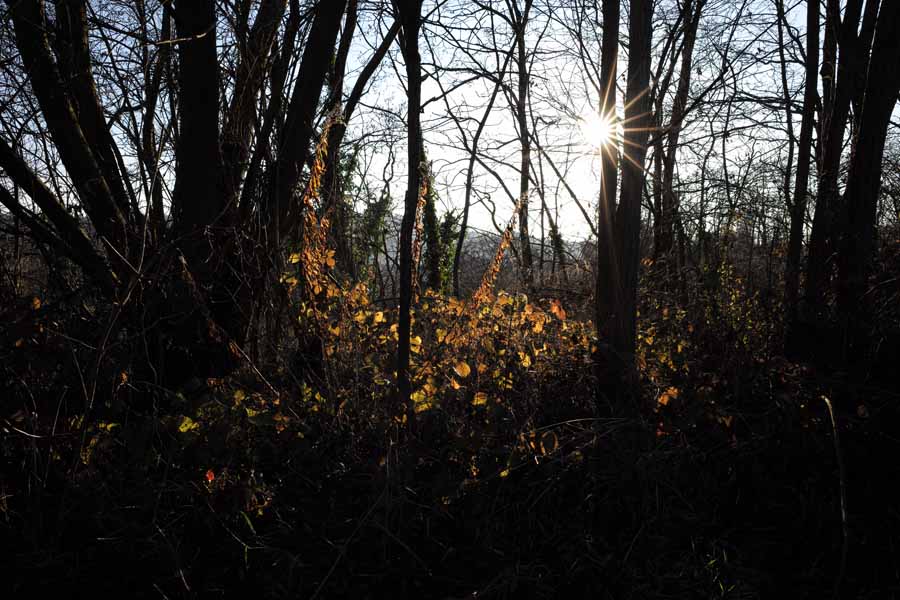 |
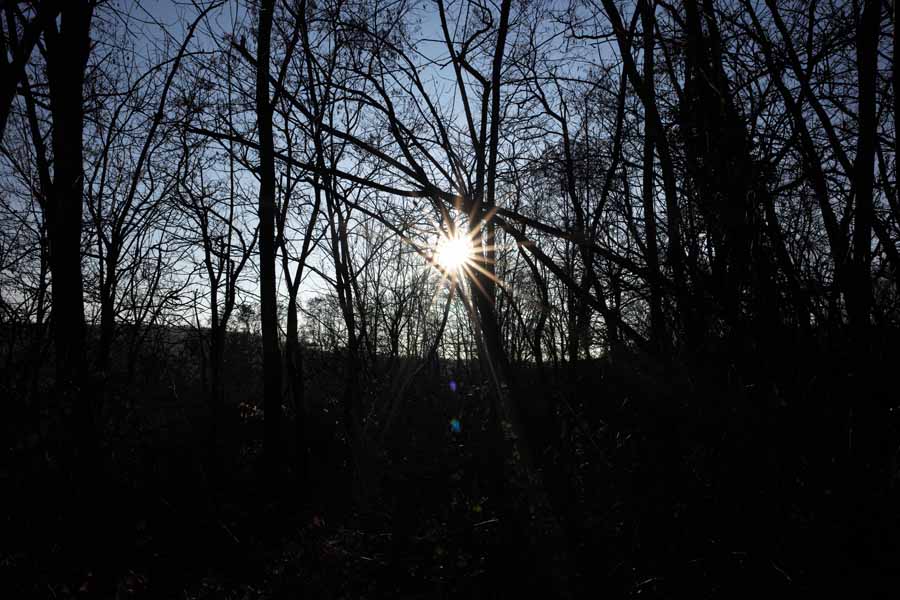 |
|
 |
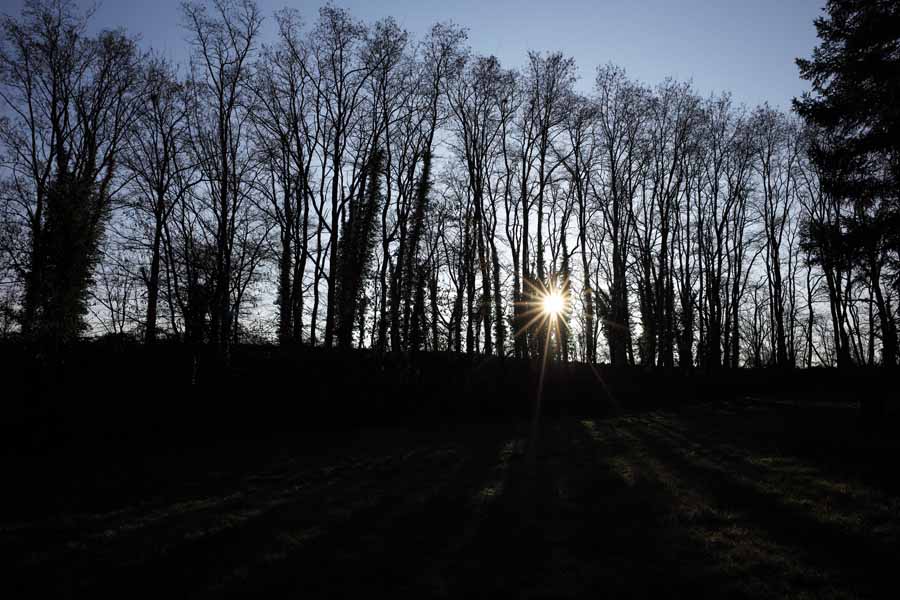 |
|
 |
 |
|
 |
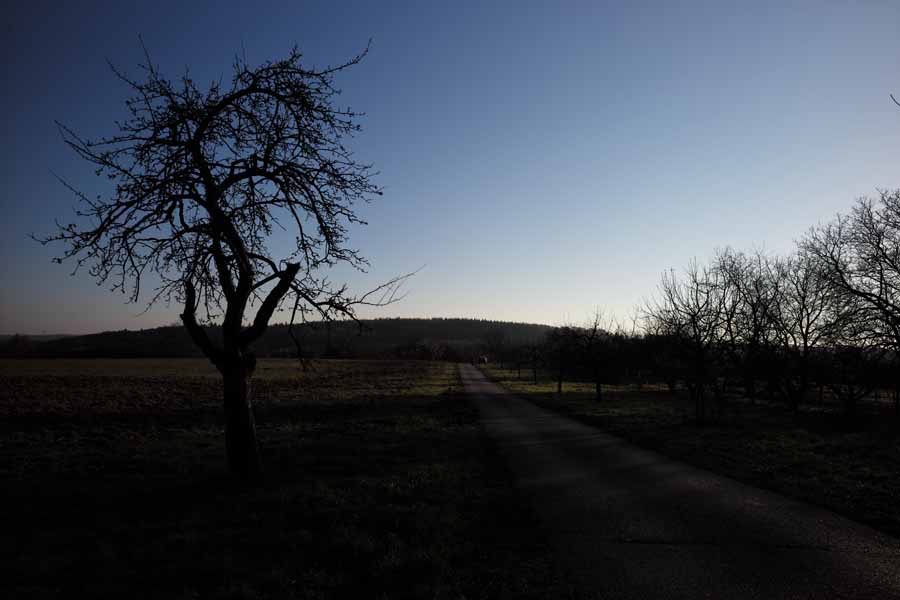 |
|
 |
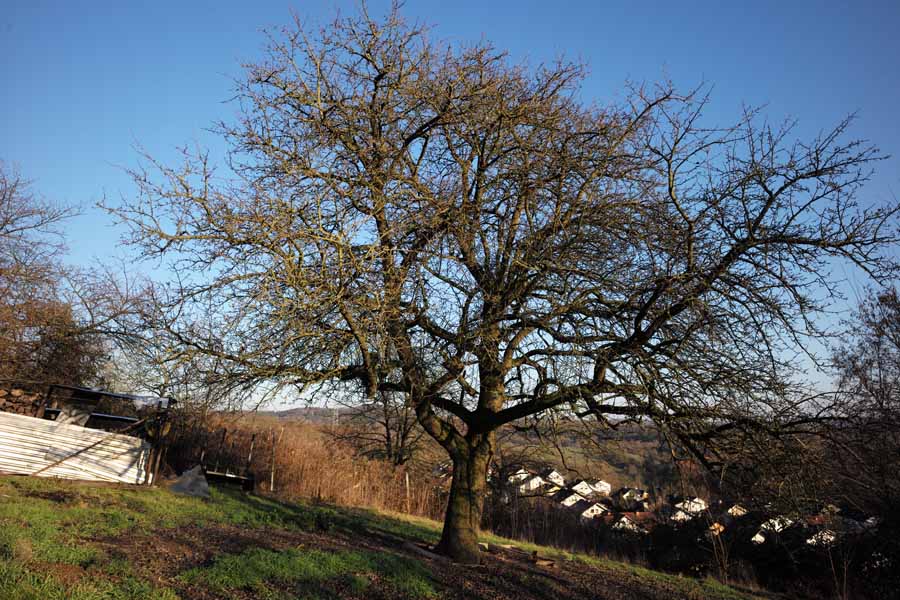 |
|
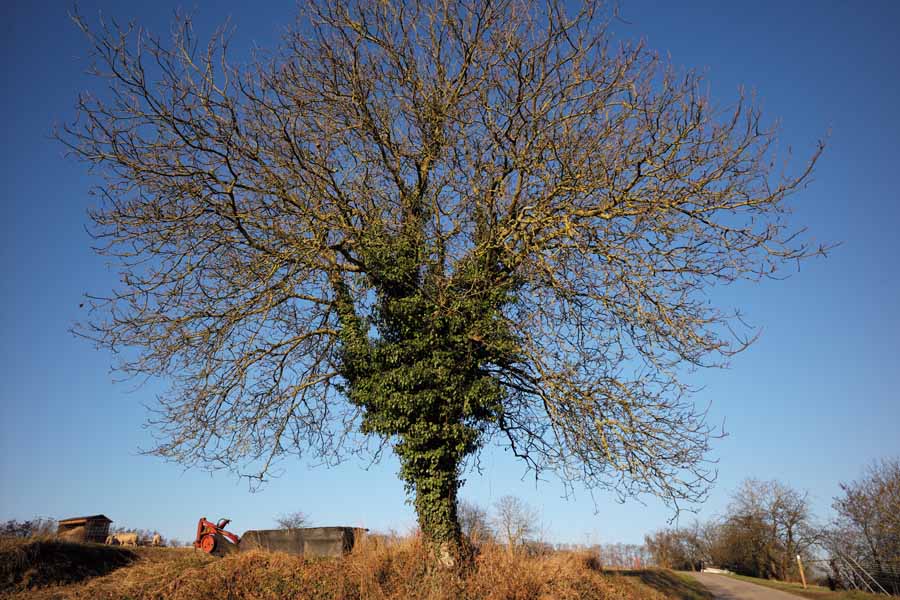 |
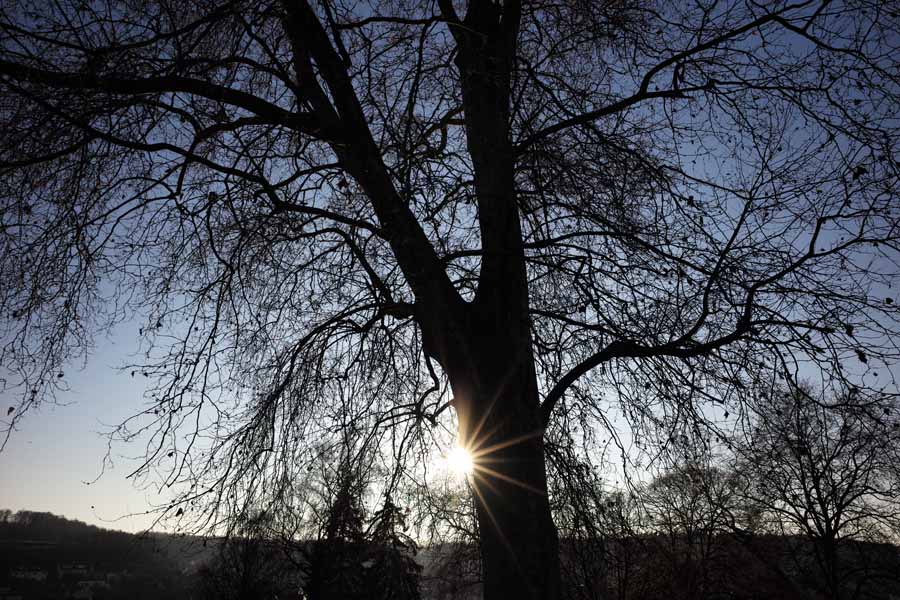 |
|
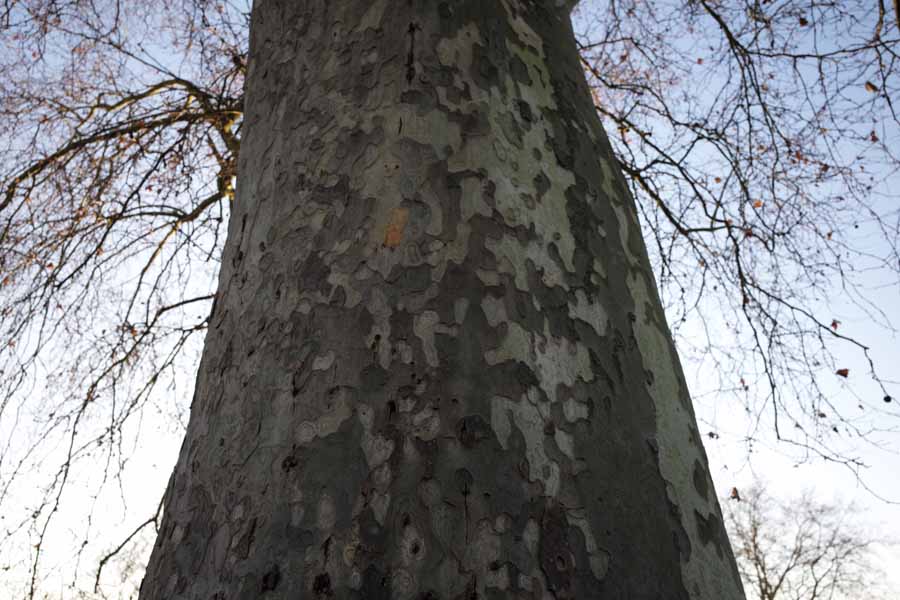 |
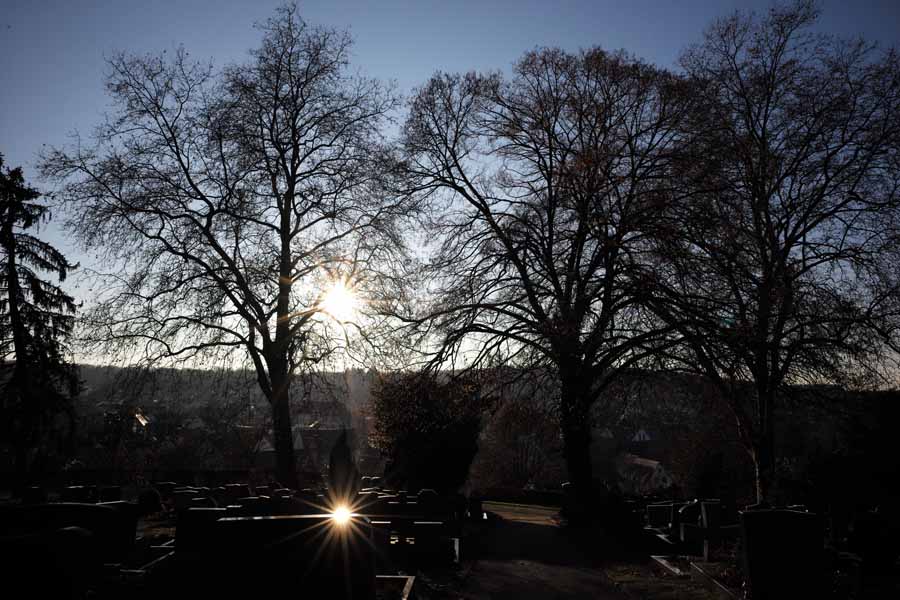 |
Some Sun Stars
Close-Up Behavior
Smallest Object Field / Magnification
| Smallest object field / | 922 mm x 615 mm (Leica); 976 mm x 651 mm (calculated); 920 mm (from photos*) |
| Magnification | 1:25.6 (Leica); 1:27.3 (calculated); 1:25,7 (from photos*) |
*) See photos below, mean value taken:
w = 910 mm; magnification = 35.8/910 = 1:25.4 (1:25)
w = 931 mm; magnification = 35.8/931 = 1:26.0 (1:26)
Photo: Leica Elmar-M 24mm f/3.8 lens (1050 mm)
With Quenox Quenox Extension Tube for Leica M
Distance > |
Infinity | 0.7 m (closest) |
| Smallest object width | 85 mm* | 77 mm* |
| Magnification | 0.42 = 1:2.4 => approx. 1:2.4 | 0.47 = 1:2.15 => approx: 1:2.2 |
*) See photos below:
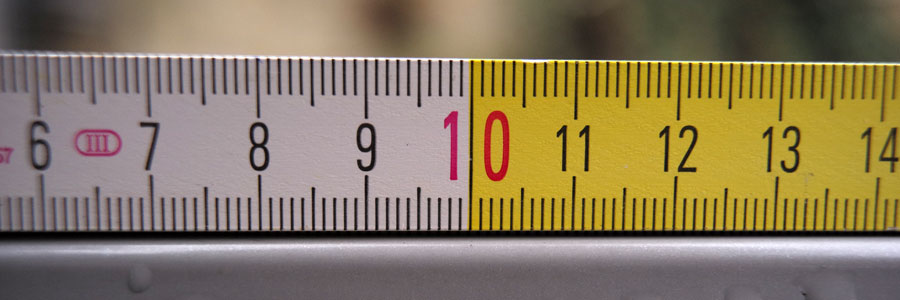 |
 |
Photos: Test shots with Leica Elmar 24mm f/3.8 and Quenox Extension Tube for Leica M; distance set to infinity (left) or closest distance (right)
Closest Distance
 |
 |
As a wide angle lens, the Leica Elmar-M 24mm f/3.8 ASPH. is not a "winner" in the close-up realm. This improves, however, dramatically if you use an extension tube like the Quenox Extension Tube for Leica M, which is a replacement for the now "extinct" Leitz OUFRO (16469Y) (1 cm). Here are a few samples taken with the Quenox extension tube (no files in original size):
Note: For close-up shots you better remove the lens hood to avoid shading.
Conclusions
Disclaimer: I am not a lens expert who sees marked differences between various Leica and/or other lenses. I can check for soft corners, find differences in color rendition, and, in rare cases, may discover a "3D look," but that's all. Please regard therefore my conclusions as the verdict of a "layman."
At the moment, it is far too early to make any judgments about this lens. My first impression is, however, very good. And the lens seems to be a "sun stars champion"...
Links
- 24mm f/3.8 ASPH Elmar-M (Leicapedia): www.l-camera-forum.com/leica-wiki.en/index.php/24mm_f/3.8_ASPH_Elmar-M
- Leica Elmar-M 3.8/24mm ASPH (Erwin Puts): www.imx.nl/photo/leica/lenses/styled-6/
- The Leica 24/3.8 Elmar-M ASPH review (Joeri van der Kloet): joerivanderkloet.com/leica-243-8-elmar-m-asph-review
- Elmar 24 f/3.8: Is it any good? (Thread in l-camera-forum started by BjarniM): http://www.l-camera-forum.com/topic/267898-elmar-24-f38-is-it-any-good
Appendix: Unpacking
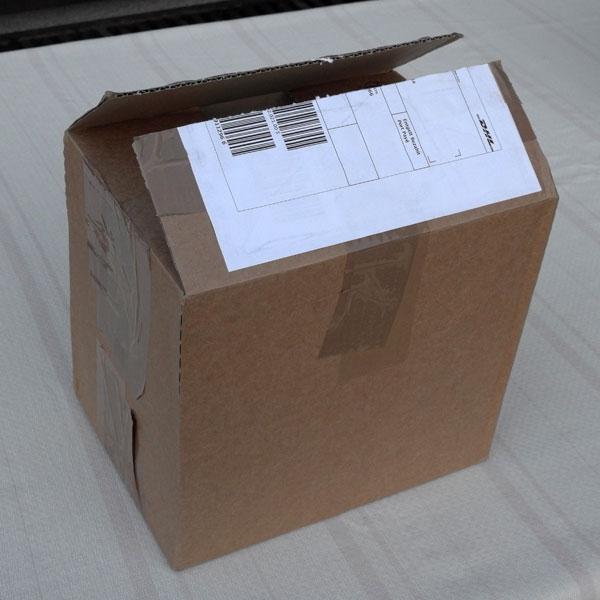 |
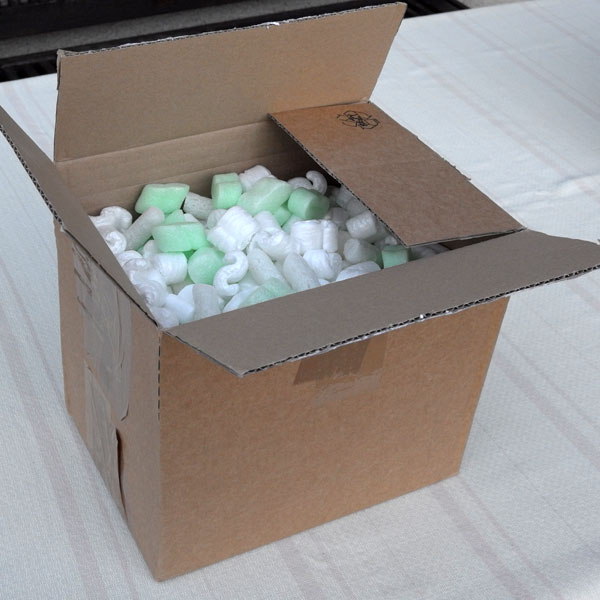 |
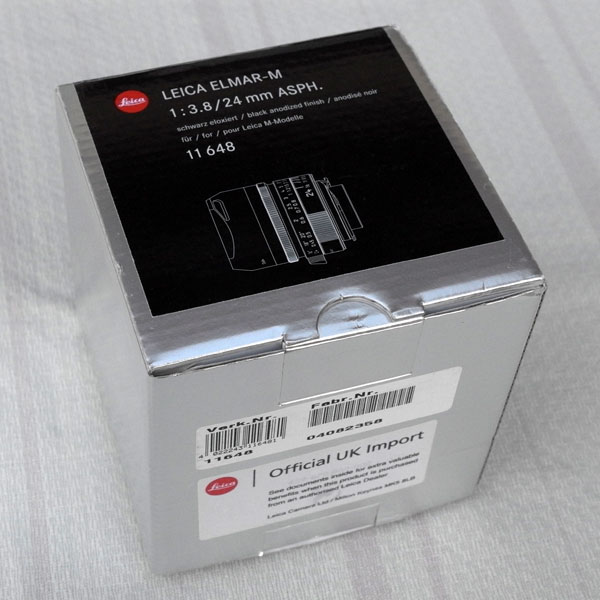 |
||
|
||||
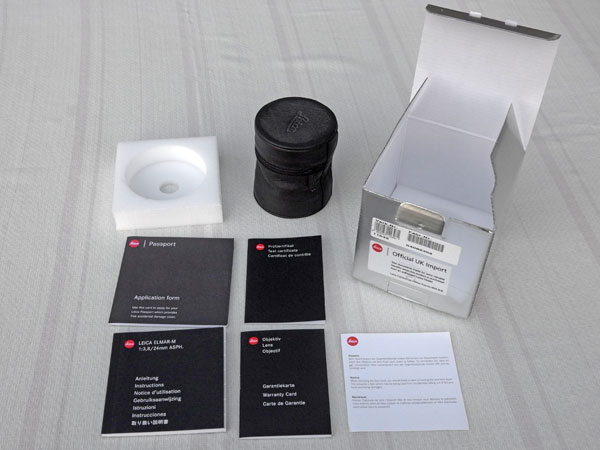 |
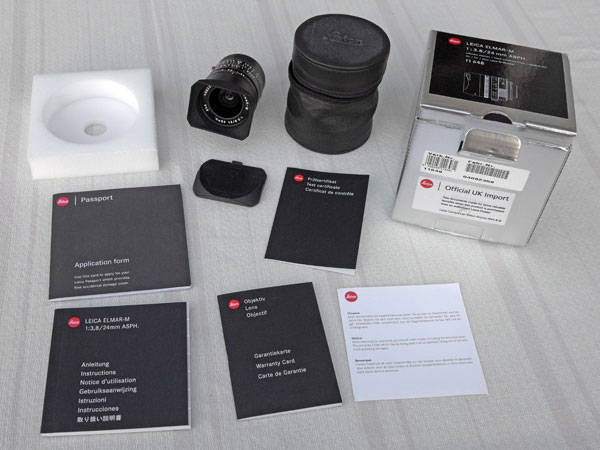 |
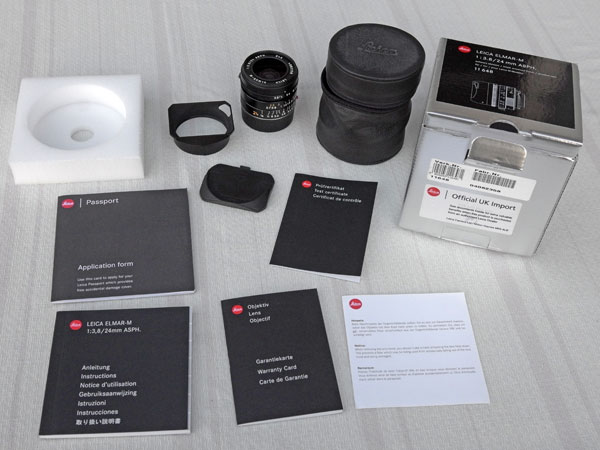 |
||
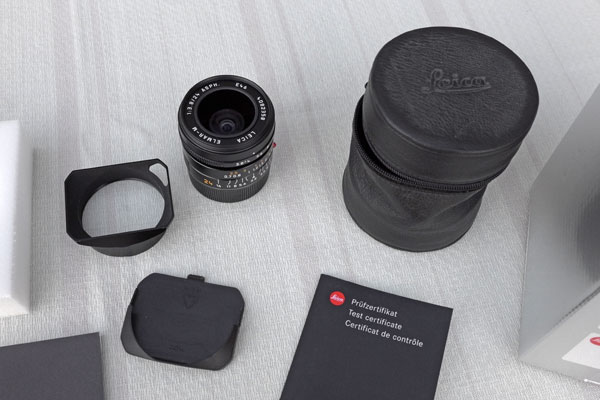 |
| 04.07.2024 |






















